by Valentina Biondini, art and literature amateur
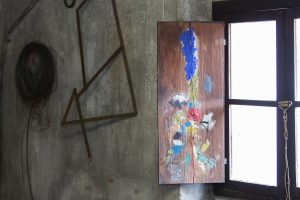
This time we focus our attention on what was considered the “first post-war artist-scientist” and “the last of the millennium”. We are talking about Fernando Melani from Pistoia, whose creative dimension was inspired by reflections on matter and atom, and then approached, even anticipating, the influences of Arte Povera, Conceptual Art and Minimal Art.
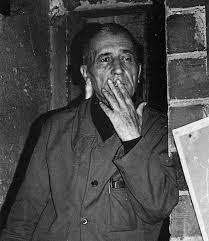
However, his activity is not easily attributable within standardized and univocal categories. In fact, although he was primarily an abstract artist, equally significant were his inclinations as a scientific researcher, writer, theorist and photographer. For example, among his many writings we mention: “Davanti alla pittura” (1953), “Addio Giulio!” (1955), “Chiò e Melani, due indirizzi della pittura plastica formativa” (1956), “Un’analisi critica di Fernando Melani, Quadri di John Forrester” (1960), “Astratto vecchio nuovo ed oltre” (1963-64) , “Universo Evoluzione Arte” (1979). Equally it should be emphasized that his eclectic activity was soon identified with his entire life experience, so much so that the artist and friend Donatella Giuntoli properly titled the essay dedicated to him “A bio-artistic experience”. Therefore it seems important to delve into the creative matter with some reference to his biography. Fernando Melani was born on March 25, 1907 in San Piero Agliana, in the province of Pistoia. After attending the gymnasium, he interrupted his studies in 1924.
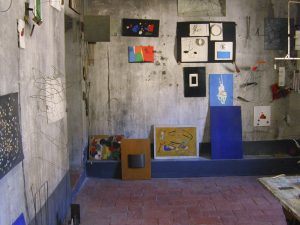
Subsequently, in 1937, he came into possession of the family home located in Corso Gramsci in Pistoia, where he lives for the rest of his life. In June 1945, after working for a while at the furnace owned by his father, by now on the verge of financial collapse, he began to devote himself to art. After all, the Second World War represents a decisive moment in Melani’s way of thinking, which completely overturns his priorities. From this moment on, in fact, he takes a series of decisions that radically change his life: first of all he joins the Italian Communist Party (PCI), then he decides to wear habitually, almost like a priestly uniform, a blue suit similar to that of the workers, often accompanied by a yellow scarf.
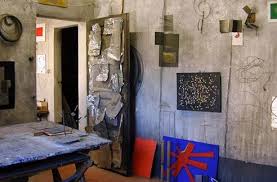
Furthermore, he gives a part of the family home to the party in exchange for an annuity, and finally transforms the remaining spaces of the house into a home-studio, devoid of all accessories and comforts, where he accumulates the results of his countless experiments. Here the house is transformed into a place dedicated to creativity, in such a symbiotic way that the biographical story of the artist from that moment on will match his own artistic practice. His interest in art dates back to 1945 and starts from painting. He trained alongside his friend Alfiero Cappellini who observed painting landscapes en plein air and who introduced him to Giorgio Morandi. His first works, among which we remember a Landscape with trees and a Self-portrait, already show a synthetic-abstract rendering of the datum of nature.

Shortly after, therefore, he began to follow the dictates of abstract art. As he will theorize in the text “Davanti alla pittura” (1953), art must be rigorously abstract. His subsequent and prolific production, which covers four decades, was created in the isolation of his home studio, in line with his shy, solitary and eccentric character, and above all as a complete self-taught artist. Starting in 1950 he exhibited what can be defined as his first “abstract” works, collaborated with various art centers in Pistoia and furthermore, thanks to the productive collaboration with the great cultural promoter Fiamma Vigo, his talent reaches up to Florence and Milan. In 1972 he took part in “Documenta 5” at the Fridericianum Museum in Kassel in Germany together with the sculptor Luciano Fabro, who was struck by the stylistic rigor of this singular artist.
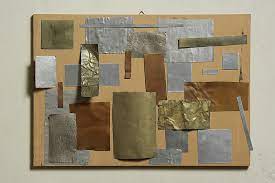
Also from 1950 belong numerous wooden works that are found halfway between pictorial and sculptural practice, in which the elements, dislocated in space, are elaborated according to neoplastic declinations. However, in 1979 his attention focused on the potential inherent in metals. His intent is to identify the reverberations hidden within matter, through a series of suggestions coming from modern physics.
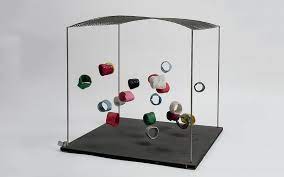
Furthermore, for Melani it’s the cognitive aspect, rather than the formal one, that influences his works, which he himself significantly defines as “experiences”. This is, in fact, the period in which he dedicated himself to the working of copper wires with the daring intention to grasp their hidden impulses. So, he creates works composed of foils, plates and nails, among which we remember “L’errore” of 1964. Instead, in the 1970s, in addition to metallic compositions, he created works that on one hand they recall the mobiles of Alexander Calder, and on the other the useless machines of Bruno Munari. Among these we mention “La macchina semplice per vedere un moto alternato” and the various “Macchine semplici per fabbricare l’atomo”. In the same period he devoted himself to the design and construction of some parts of his house, and decorated its walls and ceilings with threads and other different materials.
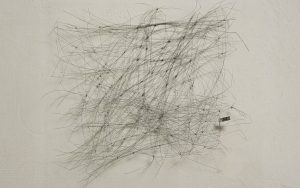
1976 is the year of “Progetto di lettura globale. Campionatura e informatica”, an installation made up of 31 monochromes of different materials and colours, exhibited in Pistoia, Milan and Vinci. At the same time, a more conceptual phase begins in Melani’s artistic career. In 1978 at the La Torre studio in Pistoia he exhibited works characterized “simply” by their material essence, such as the “Sacco di fiammiferi spenti”. While at the end of the 70s he uses bicycle frames, repainted and assembled, to create extremely eccentric characters. His journey into the art world ends with a work created on a woodworm-eaten table. Here the fibers, eroded by the action of nature, emerge overwhelmingly to demonstrate how much a work can “create” itself, or rather from the same material of which it is composed. Melani died on March 28, 1985 in his city.
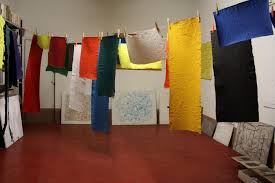
His home-studio, full of sedimented materials, metals, sheet metal and iron wires hanging from the ceiling, was purchased in 1987 by the Municipality of Pistoia, together with the over 2,800 works it contains. After a long restoration, it was reopened to the public in 1998. The experience that takes place inside causes intense and destabilizing emotions. It is a unique creative space, where the variety of materials experimented by the artist composes a conceptual path in the making. The paintings, sculptures, assemblages, writings and even the furniture positioned by the artist and never moved, interact with each other, becoming the very emblem of contemporary art. In this sort of multiform installation, in fact, transversal artistic explorations follow one another whose roots lie in genres such as Surrealism, Neoplasticism, Constructivism, Abstract Expressionism, Minimalism and Arte Povera. In this way Melani has created a real total work which, through the mixture of experimental dimensions, tells us about the creative and emotional universe of its own creator.